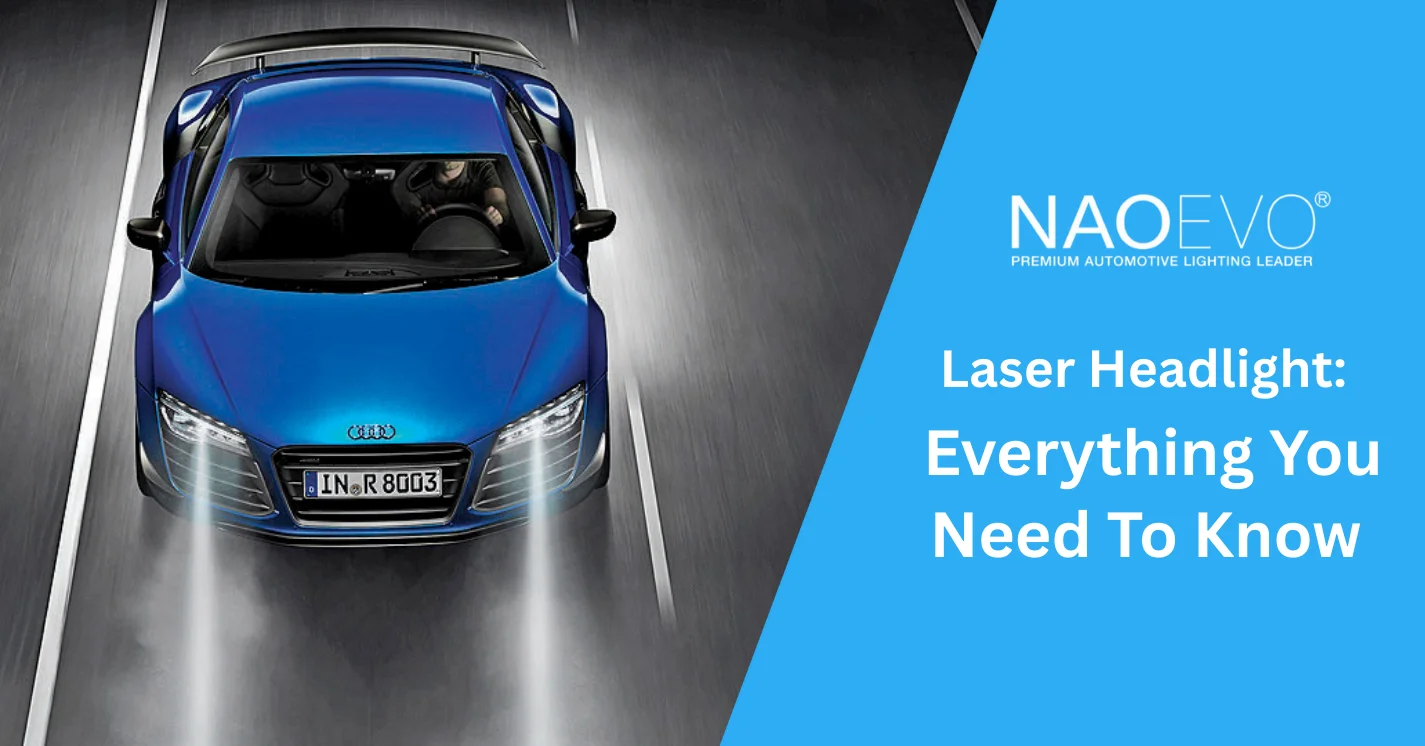Lasers are no longer science fiction—they’re powering modern car headlights on models like BMW and Audi. But what exactly are car laser headlights? How do they work, and what advantages do they have over halogen, Xenon, or LED lights?
In this guide, we’ll break down everything you need to know about laser headlights, from technology and performance to pros, cons, and real-world applications.
What is Laser Headlight?
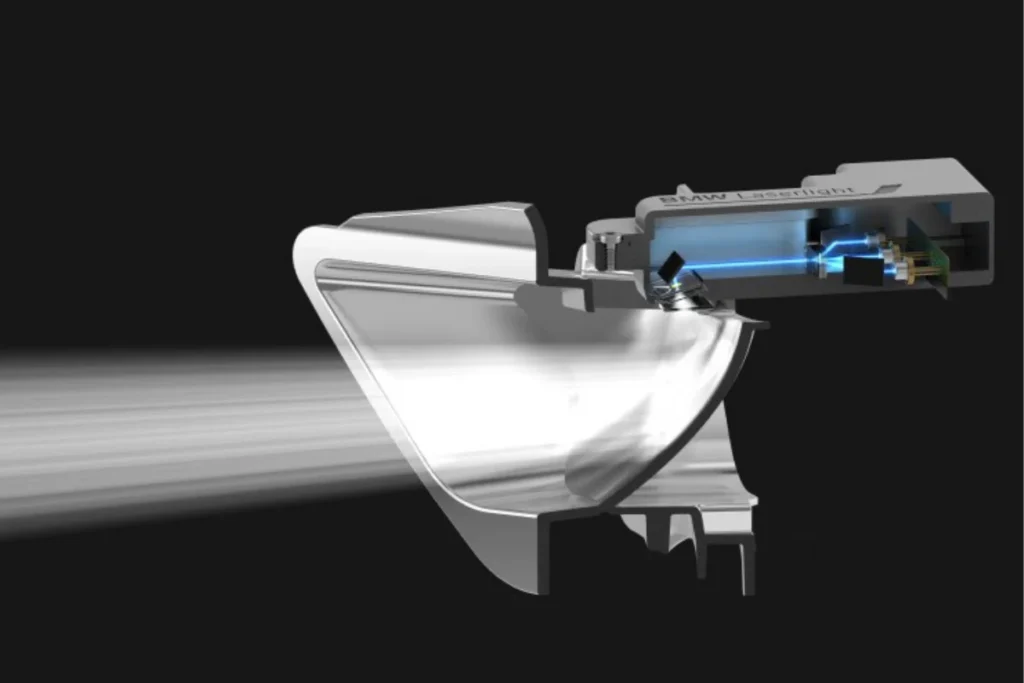
Laser headlights use laser diodes to generate a blue light beam, which then activates a phosphor material—similar to LEDs – to produce bright white illumination. This technology provides higher efficiency, a more compact design, and a longer range compared to traditional LED headlights.
In 2014, the German company Osram developed the world’s first LARP (Laser Activated Remote Phosphor) laser module, marking the first time a laser-based white light source was suitable for automotive lighting.
Shortly after, laser headlight technology was officially launched on the market, and by 2015 it entered mass production.
The first laser headlights, installed on the BMW i8 and the BMW 7 Series, made a huge impact in the automotive world.
How Do Laser Headlights Work?
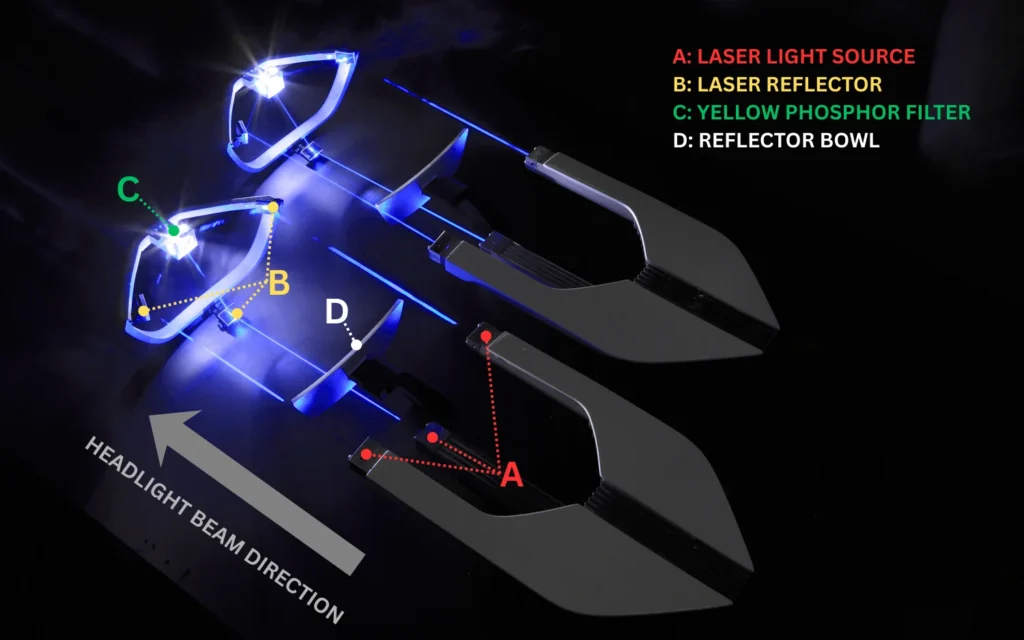
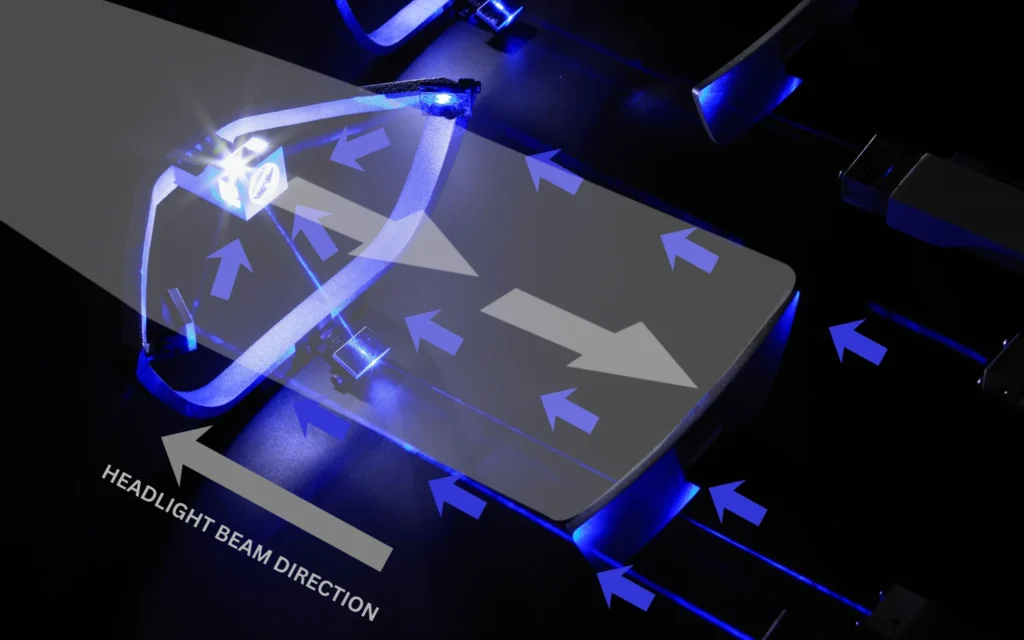
Taking the BMW i8 laser headlight system as an example, the structure of a laser headlight can be roughly divided into four components: laser light source, reflector, yellow phosphor filter, and reflector bowl.
The blue laser diode emits light that hits the reflector, which focuses it onto the yellow phosphor filter. The phosphor absorbs the energy from the blue laser and produces white light, which is then reflected again by the reflector bowl, forming a focused, cone-shaped white beam that illuminates the road ahead.
So, although the laser diode emits blue laser light, the final white light is not a true laser. Since laser diodes can only emit monochromatic light and cannot directly produce white light, the i8’s laser headlight design borrows the common approach used in LED headlights: a combination of blue monochromatic light + yellow phosphor filter to generate the white light we see.
While the principle is similar to LED headlights, laser headlights provide 1.7 times the light intensity of LEDs at the same power, and the system can also be made smaller than LED headlights.
What Cars Have Laser Headlights?
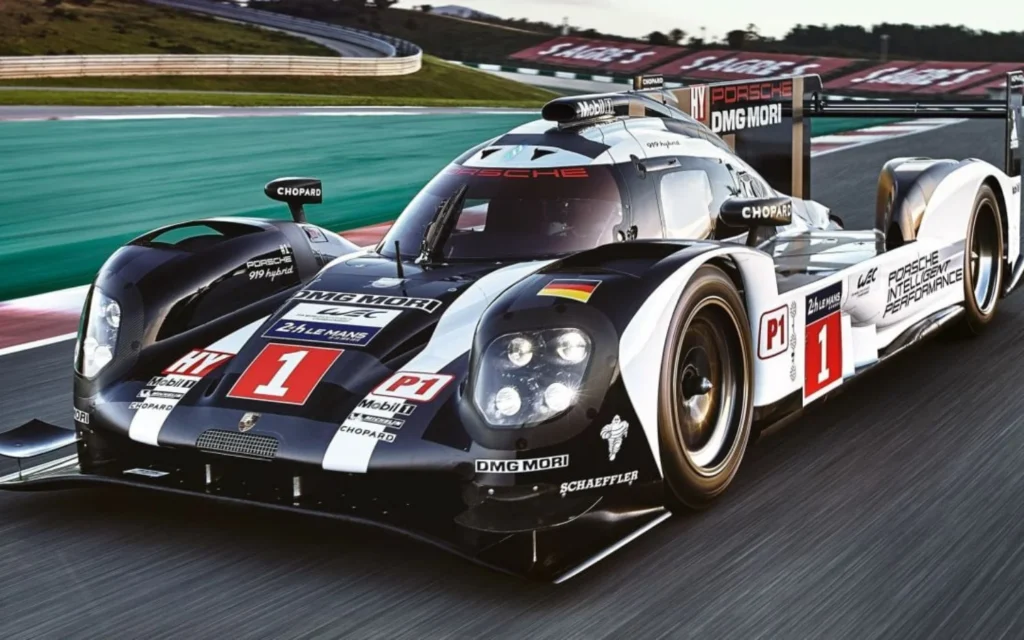

When it comes to laser headlights, few names are as important as Osram. They have powered almost every well-known mass-produced car equipped with this cutting-edge technology.
The BMW i8 became the world’s first production car with laser headlights in 2014, followed by the new BMW 7 Series and Audi R8 LMX in 2015. Audi then fitted the technology to the R8 sportscar, which has now ceased production.
That same year, even the Le Mans-winning Porsche 919 used Osram’s advanced laser lighting.
Today, laser headlights are available on models such as the BMW 4 Series GranCoupe and X7, while Audi still offers them on the Q8, A7, A5, and Q7.
Are Laser Headlights Legal In The US?
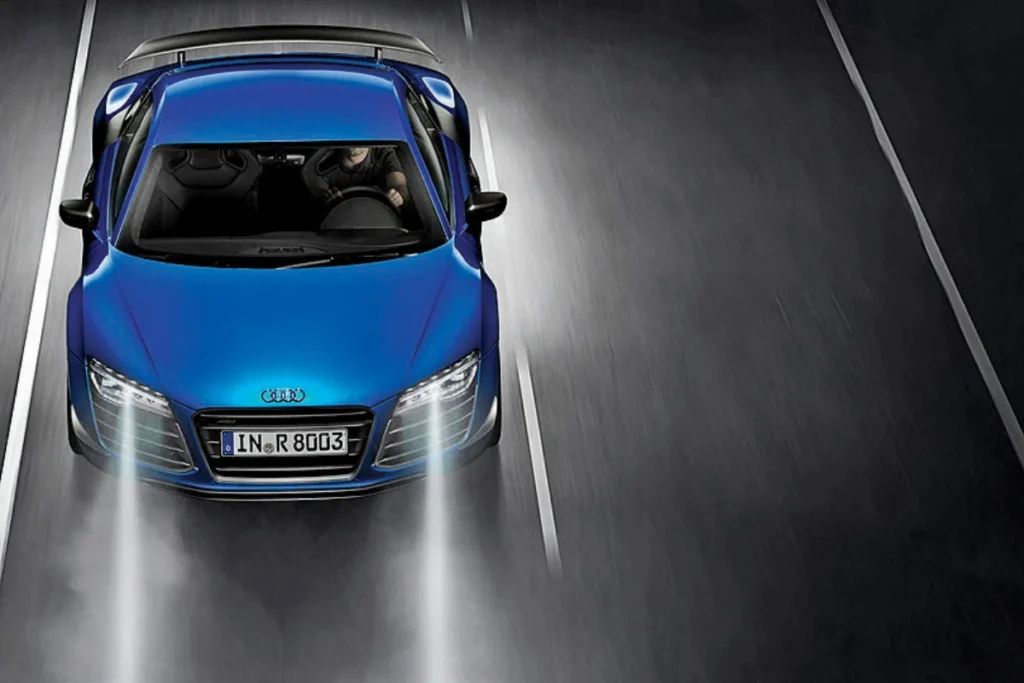
In the United States, laser headlights face strict regulations under the Federal Motor Vehicle Safety Standard (FMVSS) 108.
These rules limit headlight intensity to 150,000 candela and the beam range to just 250 meters (820 feet), much lower than the 430,000 candela allowed in Europe.
Because of these limits, laser headlights offer little advantage over LEDs, which are more affordable and highly efficient.
Since 2014, LED matrix headlights have improved significantly, providing excellent light distribution and brightness, making laser headlights less practical for new models.
According to a Fortune report, Audi has no fixed plans to add laser lights to future production models, though the possibility is not entirely ruled out.
BMW’s large-car product manager, Andreas Suhrer, confirmed that BMW currently uses laser headlights only on the G26 (4 Series GranCoupe) and X7, but has no plans for future models.
Pros And Cons of Laser Headlights
Advantages of Laser Headlight:
Longer Illumination Distance
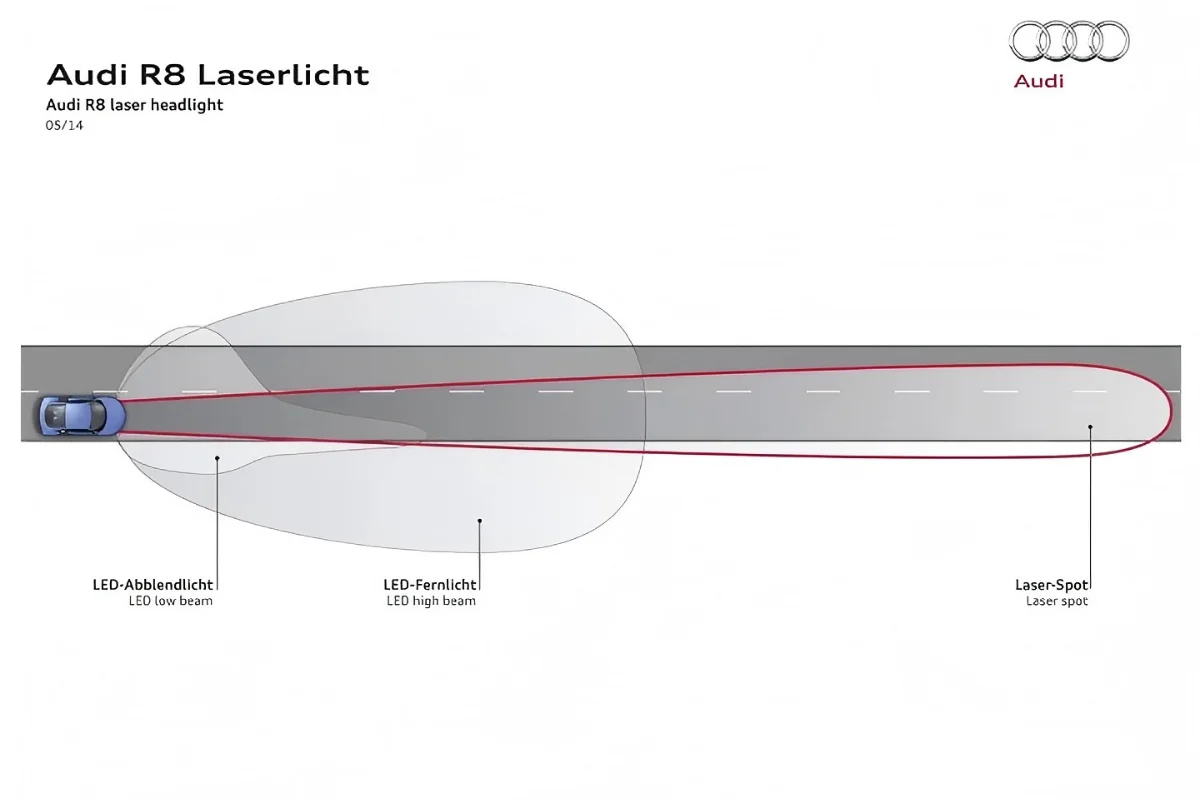
The laser headlights on the BMW 7 Series are the same as those used on the BMW i8, delivering an efficiency of 170 lumens per watt. Compared to traditional LEDs at 100 lumens per watt, this is a 70% increase in brightness. The illumination distance is also twice that of standard LED headlights.
In real-world testing, Dr. Hanafi demonstrates that BMW laser headlights can light up the entire road for nearly half a mile, transforming night driving into a clear, safe experience. This revolutionary technology ensures drivers see farther, react faster, and enjoy a whole new level of confidence behind the wheel.
Compact Size
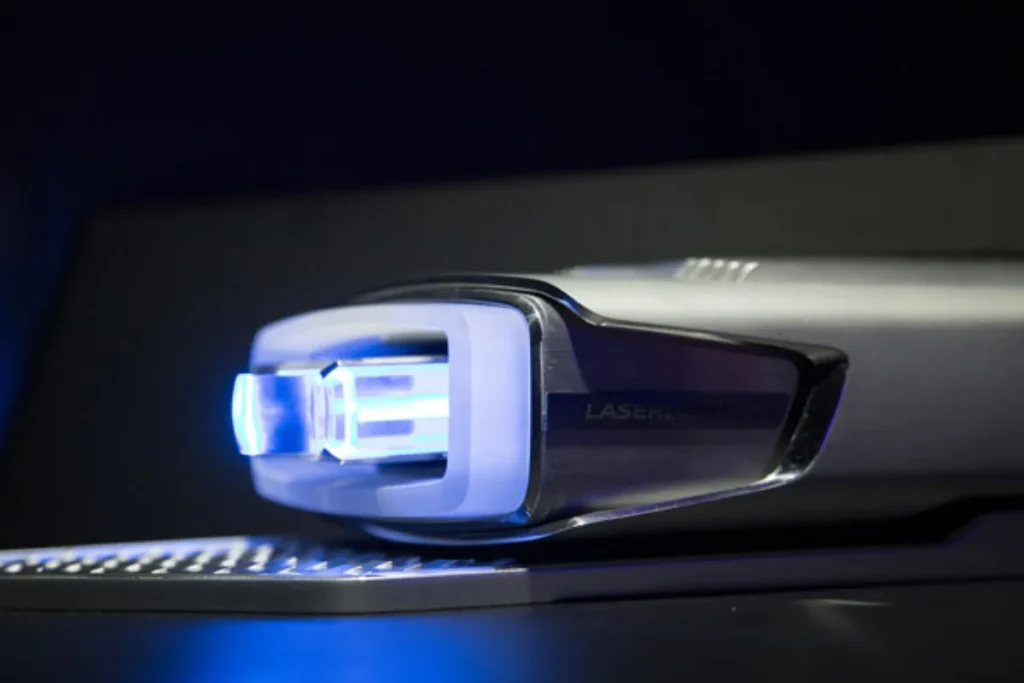
A single LED can now be made as small as just 10 micrometers—100 times smaller than current miniature LEDs. Imagine if headlights become this compact: car designers would have far more creative freedom for the front-end design, and future car front headlight could look completely different from what we see today.
Low Energy Consumption
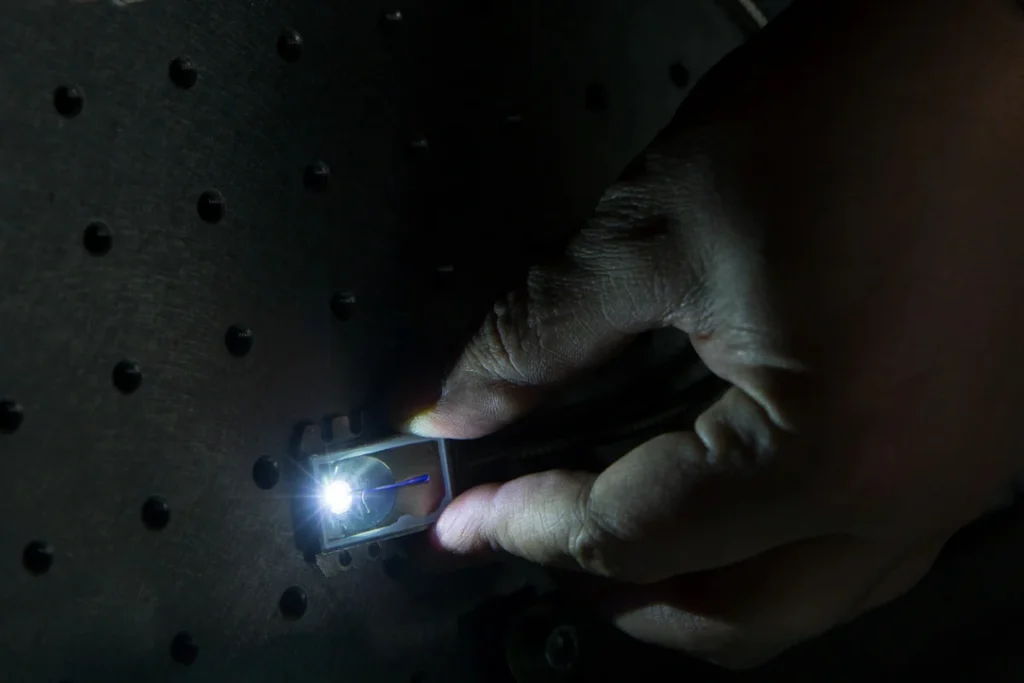
The light-emitting element can have a diameter of just a few micrometers—only about 1% of a conventional LED. This means that to achieve the same illumination, laser headlights consume less energy, saving power.
“Laser headlights require around 30 percent less energy than LED headlights while providing the same photometric performance.”
Dr. Abdelmalek Hanafi - BMW laserlight developer
Better Light Penetration

Additionally, thanks to their naturally narrow beam, laser headlights outperform LEDs in both range and penetration. This is especially noticeable during nighttime driving or in rain and fog, giving drivers a clearer view and allowing them to react earlier to road conditions.
Longer Lifespan
LED headlights have relatively significant heat issues, requiring a more demanding cooling system. In contrast, laser headlights have a smaller light-emitting area and lower power consumption, making their cooling system simpler. Additionally, laser headlights respond faster, generate less heat, theoretically last longer, and offer better safety in the event of a collision.
Disadvantages of Laser Headlight:
High Cost
The main drawback of laser headlights is their high cost. According to the media, the total cost of a laser headlight system has reached 10,000 US dollars, which is equivalent to the price of a compact car.
Narrow Light Beam
Laser headlights produce a very focused beam, which can limit the area illuminated on the road. This makes it harder to see peripheral objects, pedestrians, or animals, reducing overall visibility compared to wider-beam headlights.
Regulation Limitations
Since this headlight technology is relatively new, it is not widely understood, and some regions may restrict its use because it involves lasers.
Laser vs LED Headlight: Which is Better?
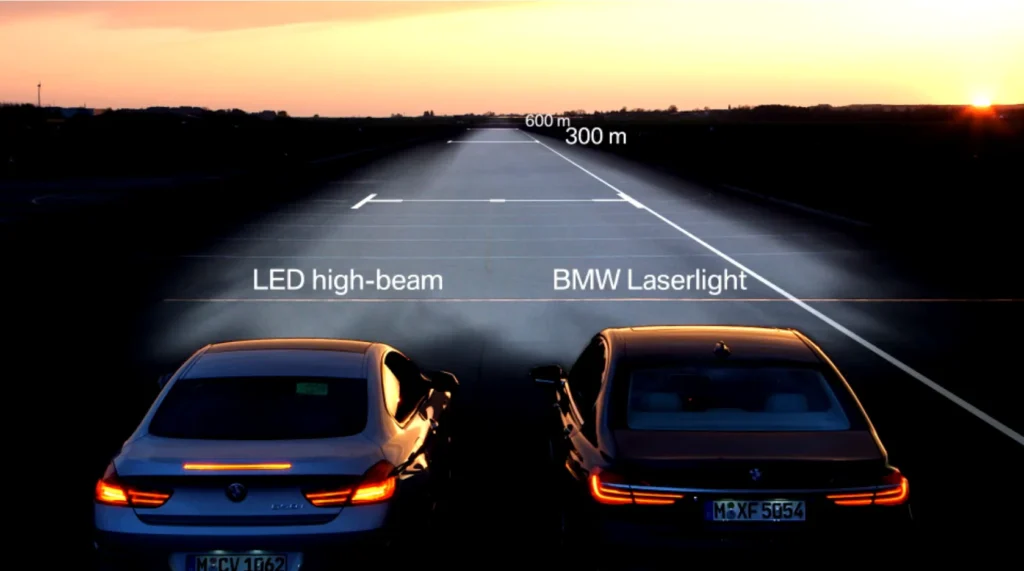
When it comes to modern car lighting, both LED headlights and laser headlights stand out as advanced options. Each brings unique advantages—LEDs are affordable, widely available, and energy-efficient, while laser headlights deliver extreme brightness and long-range visibility. To help you see the differences more clearly, here’s a side-by-side comparison:
Feature | LED Headlight | Laser Headlight |
|---|---|---|
Beam Pattern | Wide beam | Focus beam |
Max Lighting Distance | 300 meters | 600 meters |
Cooling | Produces more heat | Lower heat output |
Cost | $$$ | $$$$ |
Availability | Widely available for most vehicle types | Mostly limited to luxury and high-end cars |
Pros | Wider beam coverage Medium cost Proven reliability Easier availability | Longer lighting distance Quicker response Lower energy consumption Longer lifespan |
Cons | Slightly expensive | The cost is extremely high. According to media reports, a complete laser headlight system can cost up to $10,000—equivalent to the price of a small car. |
Summary: While laser headlights offer impressive advantages, their high cost limits widespread adoption. In contrast, LED technology has advanced rapidly, making LED headlights common in many car models.
Drivers can even upgrade from halogen to LED bulbs without replacing the entire headlight assembly. For now, laser headlights remain exclusive to luxury vehicles, far from being accessible to the general public.
Laser Headlight Activation Conditions
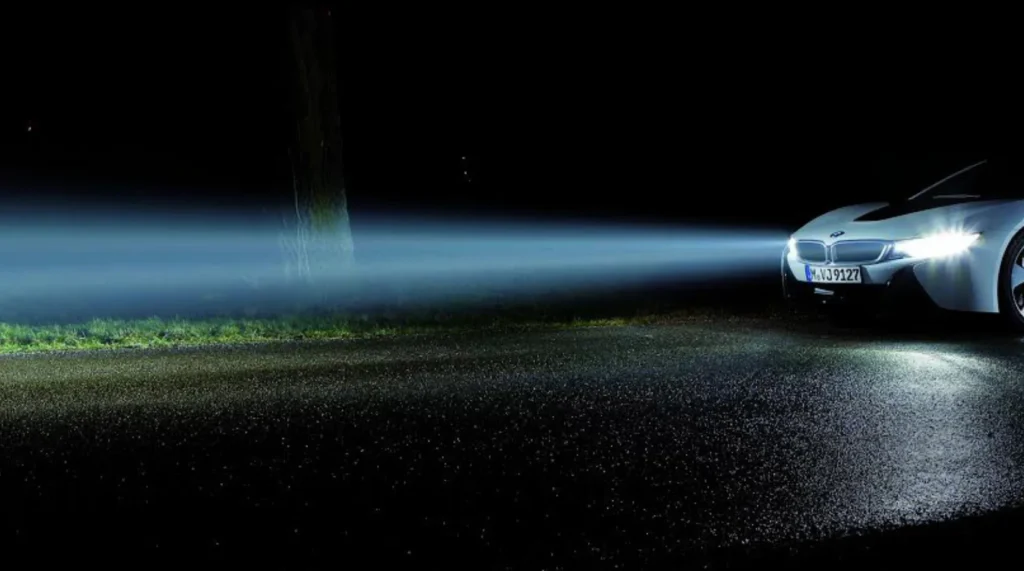
The main reason many countries are cautious about laser headlights is safety. Lasers can be harmful, and direct exposure to the eyes can permanently damage the retina. That’s why Audi and BMW set very strict activation conditions for their laser modules, which must meet all of the following requirements simultaneously:
1. In a complete dark road:
Ensure there is no significant surrounding light. The laser headlights will not activate if there is an oncoming car with its lights on, a car behind using high beams, bright streetlights along the road, or overly reflective road signs.
2. The speed must exceed 60 km/h (37 mph):
Laser mode usually requires the car to be traveling above a certain speed, often around 60 km/h (37 mph), to ensure it’s used primarily on open roads.
3. Open Road Ahead:
The system detects that there are no oncoming vehicles or traffic nearby, preventing glare or potential eye damage.
The Future of Laser Headlights
When it comes to the development of car headlights, many people probably think the progression is halogen → xenon → LED → laser. Even many automotive lighting professionals, used to think this way. But looking at the current trends, that’s not necessarily the case!
The reason for this is that laser headlights seem to be losing some momentum. Even BMW and Audi, which were among the most active in equipping their flagship models with laser headlights, have admitted they have no confirmed development plans for the technology.
As Suhrer explained, “The G60 and G61 (5 Series) do not have it, and the new 7 Series does not have it. Laser lights are very good for absolute range, but the latest generation of LED Matrix lights provides better light distribution, so our focus is on LED technology moving forward.”
But why are laser headlights fading from the market? Most people would first think of cost, but I don’t think that’s the main reason.
After all, models like the Audi A8 and BMW 7 Series are top-tier luxury cars, packed with every premium feature. Suggesting that automakers are cutting costs on such vehicles is hardly convincing!
In my view, the real reason laser headlights are being phased out comes down to two points:
First, Laser Headlights Are More Style Than Substance.
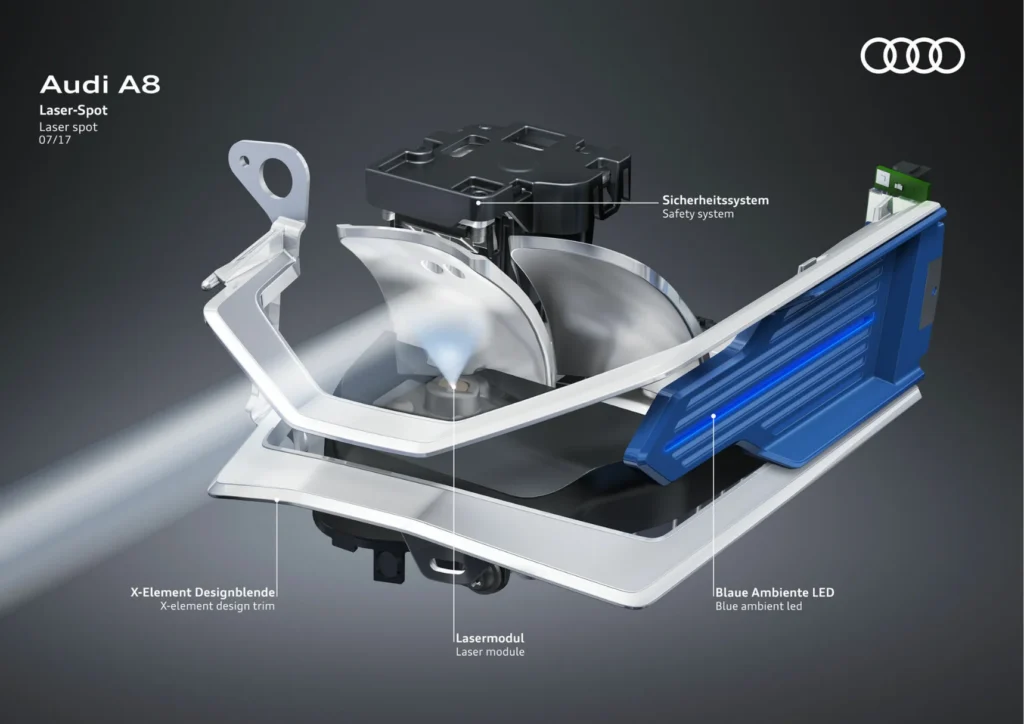
As a manufacturer focusing on automotive lighting for many years, we understand what laser headlights really are. To put it bluntly – they are largely a marketing feature. Essentially, they still rely on LED technology to produce both low and high beams.
Although laser headlights do contain lasers, their usage is very limited. Both BMW and Audi laser headlights have very strict activation conditions. For example, the car must be traveling above 60 km/h, the surrounding environment must be completely dark, and the headlights must be in adaptive mode. Only when all three conditions are met will the laser activate automatically in high-beam mode.
For most road conditions in many countries, even when driving on highways, it is very difficult to meet all three of these conditions simultaneously.
As a result, many drivers feel, “I have laser headlights, but why does it seem no different from regular headlights?” The reason is simple: the laser function never actually activates, so in practice, it performs much like a standard headlight.
But why are laser headlights designed this way? The truth is, there’s no other choice—the laser is extremely bright. If it were to shine directly into someone’s eyes, it could cause temporary blindness. Therefore, strict safety measures must be in place before activation. To ensure absolute safety, these demanding operating conditions are necessary.
Second, Headlights Evolve into Digital Technology
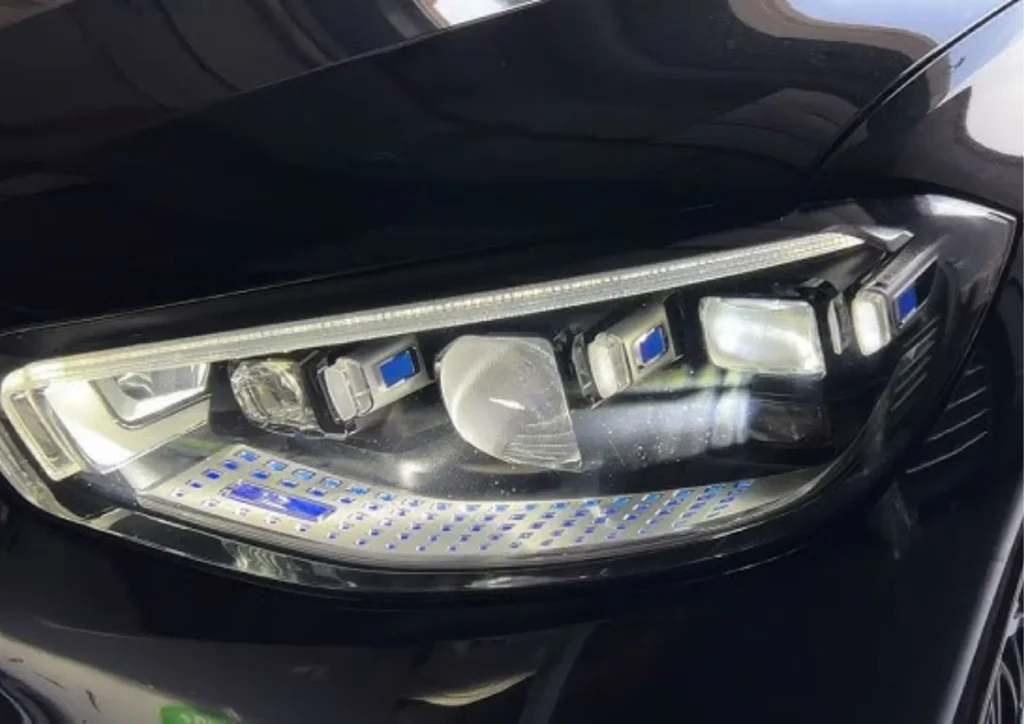
In fact, this isn’t entirely a new technology. Back in 2020, while BMW and Audi were still focusing on laser headlights, Mercedes was already equipping its flagship S-Class with pixel headlights boasting up to 2.6 million pixels. Models like the Wenjie M9 also use similar technology.
Essentially, these headlights are still LED-based, but the technology is highly advanced. Take Mercedes’ “starlight” digital headlights as an example: each headlight contains 1.3 million micro-mirrors. Controlled by a DMD chip, each micro-mirror can independently adjust its projection angle. This allows the headlights to not only provide illumination but also project intricate patterns onto the road ahead, delivering precise driving reference information to the driver.
While laser headlights are unmatched in brightness and range, they fall short in practicality compared to pixel headlights. For automakers, this makes the choice straightforward.
Looking Beyond Laser: Why Choose NAOEVO LED Headlights
Laser headlights may have once been seen as the ultimate in automotive lighting, but their high cost and restrictive operating conditions make them impractical for most drivers. LED headlights, on the other hand, are rapidly proving themselves as the smarter, more practical choice.
With superior efficiency, reliable performance in everyday driving conditions, and wider vehicle compatibility, LED technology is poised to outperform laser headlights in the future. Among LED options, NAOEVO stands out by offering high-quality LED headlight bulbs that deliver bright, stable light, precise beam patterns, and advanced heat management—making them an ideal upgrade for drivers seeking both performance and value.
NAOEVO Prioritizes Light Efficiency Not High Power
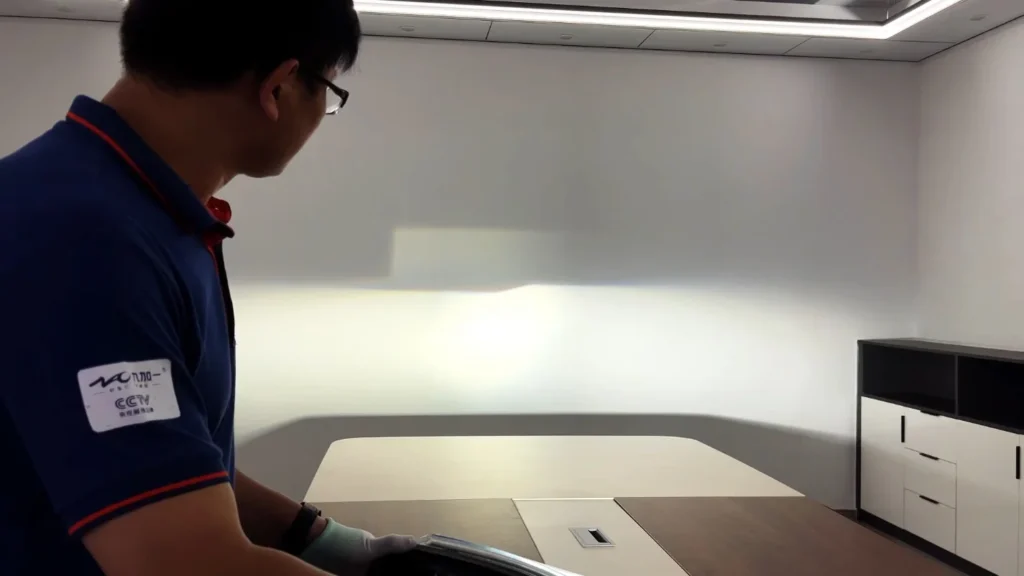
NAOEVO has been making high-brightness LED headlight bulbs for 19 years. What customers love most about their products are the “very bright output,” “good quality,” and “excellent beam pattern.” The secret is that they focusing on improving light efficiency instead of just chasing higher power numbers.
Take the NAOEVO S3MAX LED headlight bulb as an example. Each bulb delivers 45W and 5000LM, and even after an hour of use, the power stays stable at 40W. Its light efficiency reaches an impressive 120LM/W, while other bulbs with similar power usually only reach 90–100LM/W.
Thanks to its high light efficiency, the brightness of NAOEVO LED headlight bulbs is not inferior to laser lights.
NAOEVO LED Headlights Designed to Match Your Halogens
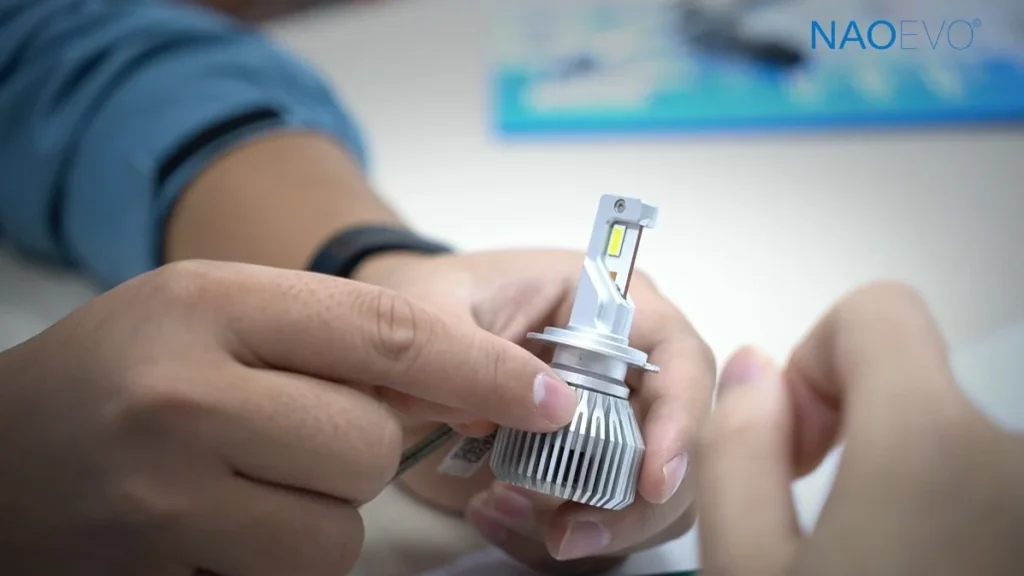
The main concern of most customers when upgrading to LED headlight bulbs is: “Will these bulbs match my halogen bulbs?” “Will they be too bright and cause glare?” “Will the light beam pattern be the same as my OEM bulbs?” NAOEVO addresses all these questions with a precise 1:1 halogen design and advanced optical technology. This ensures a perfect beam pattern, no glare, and true plug-and-play installation.
NAOEVO LED headlight bulbs can directly replace halogen bulbs without changing the entire housing. By contrast, when a laser headlight fails, repair or replacement can be extremely costly—making NAOEVO LEDs the smarter, more practical choice.
Final Words
Car laser headlights represent the cutting edge of automotive lighting, offering unmatched brightness and long-range visibility. But when comparing LED vs laser headlights, it’s clear that LEDs remain the more practical choice for most drivers.


